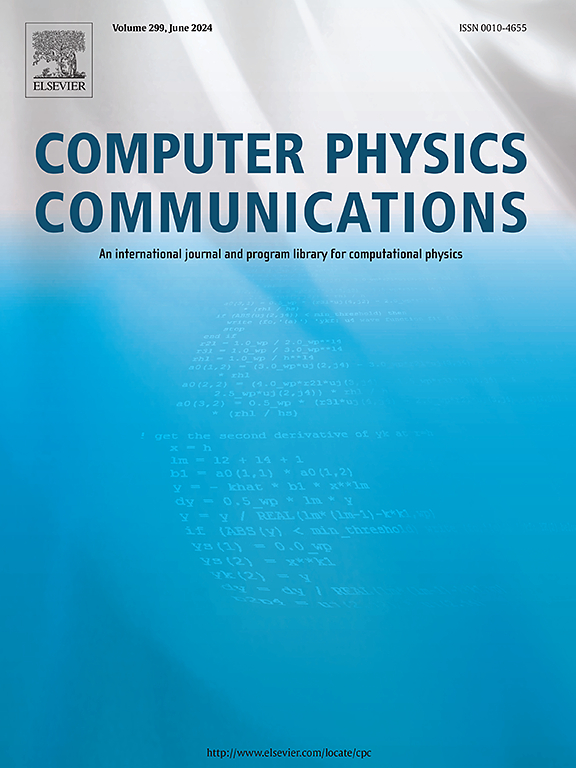A block-structured nonuniform meshing technique for reducing the degrees-of-freedom in hybrid particle-in-cell plasma simulations
IF 7.2
2区 物理与天体物理
Q1 COMPUTER SCIENCE, INTERDISCIPLINARY APPLICATIONS
引用次数: 0
Abstract
In this work we discuss a block-structured nonuniform meshing technique for multi-scale plasma simulations of plasma sheaths and scrape-off layers, suitable to implementation in hybrid Particle-in-Cell (PIC) schemes that consider kinetic ions and Boltzmann electrons. The meshing scheme is designed to support large-scale fusion plasma domains (spanning tens of meters) with a substantially reduced number of degrees-of-freedom (DOF) compared to simulations employing a uniform mesh. We show that the solution derived at low DOFs maintains the same level of accuracy as solutions obtained from highly refined uniform meshes, still maintaining particle noise under control. The meshing scheme can be equally applied to both 1D and 2D plasma domains. This reduction in DOFs leads to a significant reduction in computational cost while keeping total count of computational particles the same for corresponding cases, making it a valuable tool for cost-effective, multi-scale fusion plasma simulations.
块结构非均匀网格技术用于降低混合粒子胞内等离子体模拟的自由度
在这项工作中,我们讨论了一种块结构非均匀网格技术,用于等离子体鞘层和刮擦层的多尺度等离子体模拟,适用于考虑动力学离子和玻尔兹曼电子的混合粒子-细胞(PIC)方案。该网格方案旨在支持大规模聚变等离子体域(跨越数十米),与采用均匀网格的模拟相比,其自由度(DOF)大大减少。我们表明,在低自由度下得到的解与从高度精细的均匀网格得到的解保持相同的精度水平,仍然保持粒子噪声在控制之下。该网格划分方案可以同样适用于一维和二维等离子体域。dof的减少导致计算成本的显著降低,同时保持相应情况下计算粒子的总数相同,使其成为具有成本效益的多尺度聚变等离子体模拟的有价值的工具。
本文章由计算机程序翻译,如有差异,请以英文原文为准。
求助全文
约1分钟内获得全文
求助全文
来源期刊

Computer Physics Communications
物理-计算机:跨学科应用
CiteScore
12.10
自引率
3.20%
发文量
287
审稿时长
5.3 months
期刊介绍:
The focus of CPC is on contemporary computational methods and techniques and their implementation, the effectiveness of which will normally be evidenced by the author(s) within the context of a substantive problem in physics. Within this setting CPC publishes two types of paper.
Computer Programs in Physics (CPiP)
These papers describe significant computer programs to be archived in the CPC Program Library which is held in the Mendeley Data repository. The submitted software must be covered by an approved open source licence. Papers and associated computer programs that address a problem of contemporary interest in physics that cannot be solved by current software are particularly encouraged.
Computational Physics Papers (CP)
These are research papers in, but are not limited to, the following themes across computational physics and related disciplines.
mathematical and numerical methods and algorithms;
computational models including those associated with the design, control and analysis of experiments; and
algebraic computation.
Each will normally include software implementation and performance details. The software implementation should, ideally, be available via GitHub, Zenodo or an institutional repository.In addition, research papers on the impact of advanced computer architecture and special purpose computers on computing in the physical sciences and software topics related to, and of importance in, the physical sciences may be considered.
 求助内容:
求助内容: 应助结果提醒方式:
应助结果提醒方式:


